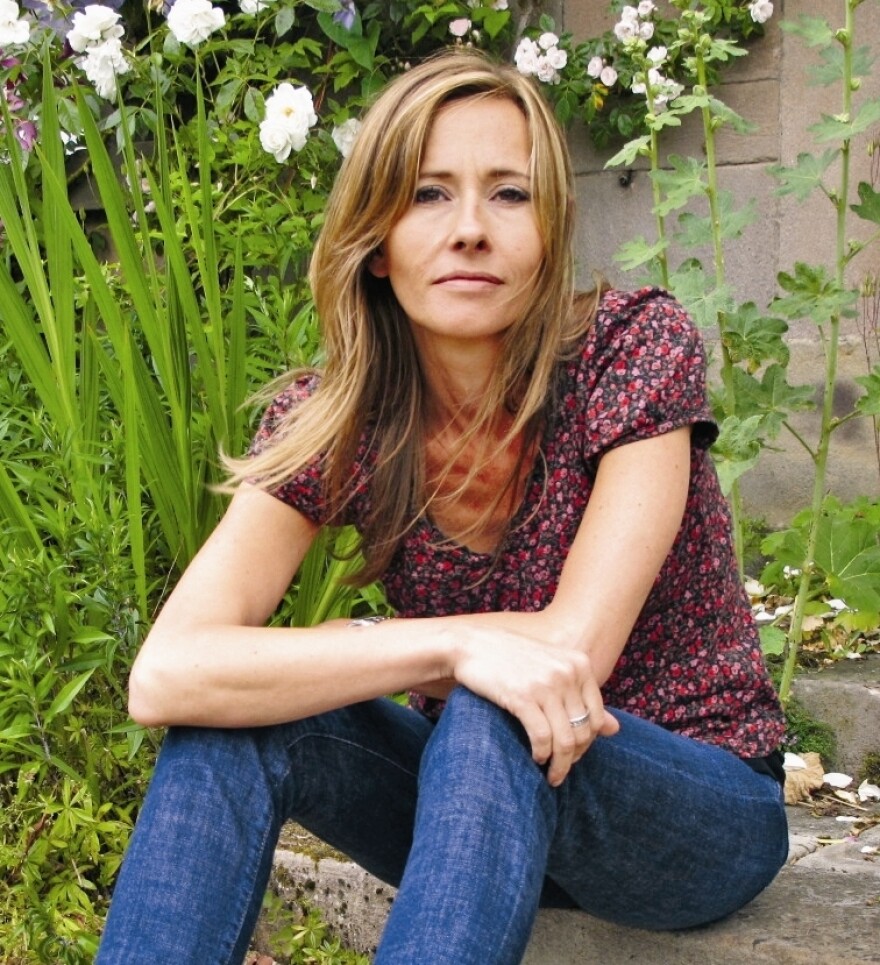It's been a good season for stargazers, a veritable meteor shower of astronomical goodies, from a supermoon to a solar eclipse. Next up? On Tuesday, June 5, astronomy enthusiasts can witness the Transit of Venus — one of the rarest astronomical events.
During the six-hour transit, Venus moves in between the Earth and the sun. It's a daytime phenomenon: "Instead of seeing Venus as the brightest object in the night sky, you see Venus as a tiny black dot crossing the burning disc of the sun," explains Andrea Wulf, author of Chasing Venus.
It's an event that happens in pairs eight years apart — and then not again for more than a century. "I think we will be the last living people to see one because the next one is going to be in 2117," Wulf tells NPR's Rachel Martin.
Wulf's book, which is subtitled The Race to Measure the Heavens, explores the scientific and historical significance of the Transit of Venus. Back in the 1700s, the transit offered an opportunity for astronomers to unlock some fundamental puzzles about the solar system.
Interview Highlights
On 18th-century astronomers using the transit to figure out the distance between the Earth and the sun
"They would measure the time and duration of the transit, [and] they could then collect the data they needed to find out about the distance. The only problem was that they needed to have hundreds of observers looking at this from as far apart places as possible — because if you were an observer in the Northern Hemisphere, you would see Venus marching across the sun on a slightly different track to an observer in the Southern Hemisphere. These differences in the tracks across the sun — that's what they needed to calculate the distance between Earth and sun.
On the significance of scientists across the world working together
"This became the first global international scientific collaboration. I think for me that's the amazing story about this: ... You have hundreds of astronomers working together in the midst of the Seven Years' War."
On Astronomer Edmond Halley who predicted the Transit of Venus
"We know Halley really from Halley's Comet, which he predicted — but he also predicted something else. He, in 1716 — so almost 50 years before the transit of 1761 — he wrote a 10-page essay, and in this essay he predicted that there would be a transit on the 6th of June 1761, and that this transit could be used to calculate the size of the solar system. And he knew he's not going to be alive then because he's already quite old in 1716, so what he's doing is he's calling a future generation of scientists saying: Whatever happens in 1761, you will all have to work together to observe this spectacle."
On the scientists who, despite the odds, answered Halley's call
"The Seven Years' War, which started in 1756, is a war which tears apart Europe. So these astronomers, a lot of them get attacked, so it makes it incredibly difficult.
"This is a time when ... a letter from London to Philadelphia takes two to three months. There are no standardized measurements on Earth. And they're trying to all work together to come up with one common value — the distance between Earth and sun. So they're sending out these expeditions to the remotest places in this world, and these astronomers ... they travel with instruments that weigh about a half a ton, so they're like schlepping around these instruments. (There's a French astronomer, for example, who goes from Paris to Siberia and ... because his instruments are so heavy, he constantly crashes ... through the frozen rivers.)

On how the measurements went during the transits
"There are two transits, the 1761 — that doesn't go very well. But they knew they had a second chance because there was the second transit eight years later in 1769, and the conditions for that transit were much better. The political conditions had much improved because the Seven Years' War had ended, and the astronomical conditions were also better. So they come up with a value [of the distance between the Earth and the sun], which is very, very close to today's value. ... Today we know it's just under 93 million miles, and they come up with a range between 93 and 97 million miles. So, pretty impressive."
On the foundation the astronomers built and the legacy they left for today's scientists
"They worked together peacefully and successfully, and I would argue that they laid the foundation of modern science how we understand it today. All these big science projects today, we take that for granted. International collaboration — we tend to talk about this as if this is something rather recent, [but] it all started in the transit decade. They laid the foundation, and all these connections they made with each other remained in place, and there were lots of other projects that grew out of that later."
Copyright 2023 NPR. To see more, visit https://www.npr.org.






